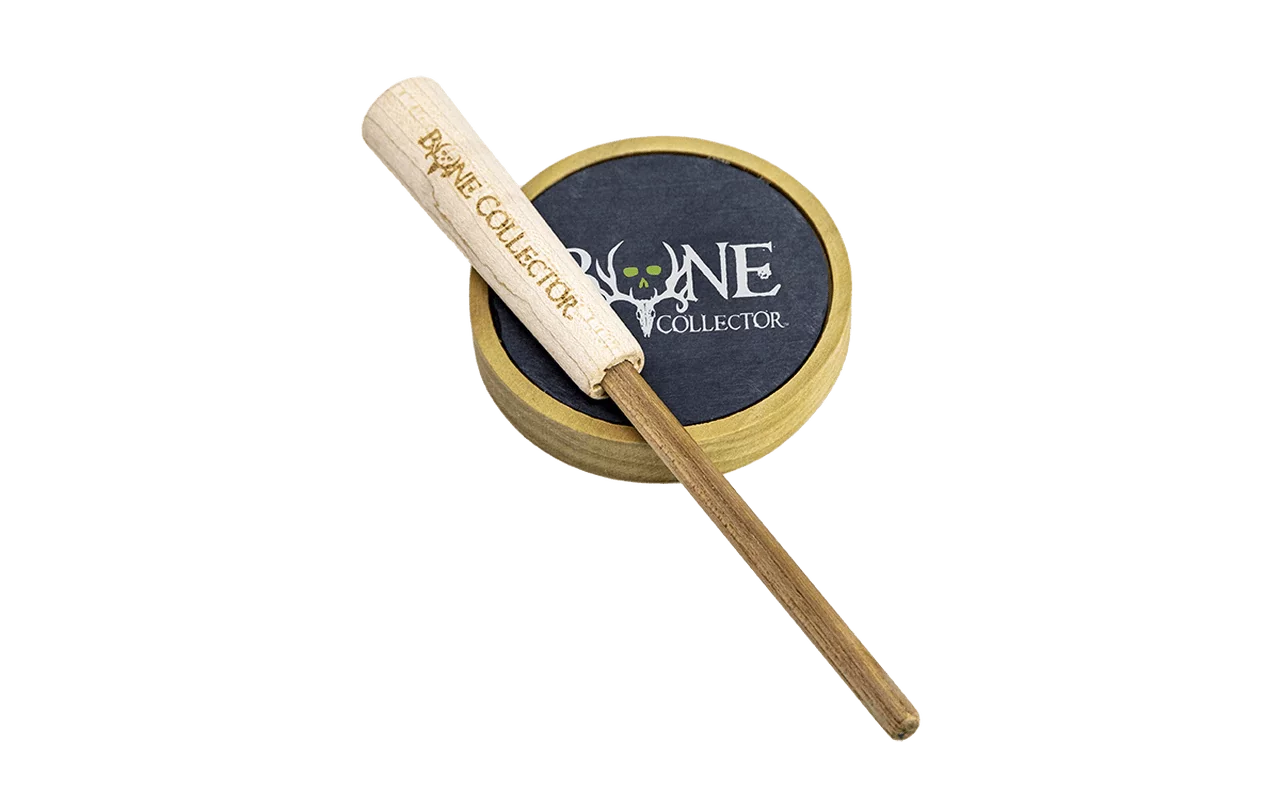Tips for Making the Most of Your Turkey Pot Calls
One of the most appealing parts of turkey hunting is the game of cat and mouse that comes with calling turkeys. It’s exciting to interact with a responsive tom, especially when he keeps firing right back at your hen yelps. Many of us probably started turkey calling by using a box call or playing around with a mouth call a bit. And while newbies can make sounds on a pot call, it definitely requires more practice and skill than the other options. So with that in mind, here are some ways you can get improve at turkey pot calls.
Turkey Pot Calls
When you’re ready to commit to the art and science of turkey calling, you need to choose a pot call first. Thankfully, the market has lots of great options, including a few of the excellent turkey pot calls below from Bone Collector. They’re all made in the USA with high quality materials and craftsmanship.

- Poplar Girl – poplar wood pot, slate surface, hickory striker
- Lonesome Lady – Mahogany cup, slate over glass surface, hardwood striker
- Sweet April – Mahogany cup, glass over glass surface, hardwood striker
- Crystal Jenny – Acrylic pot, crystal surface, one-piece striker
Preparation is Important
Well before the season opens, you should get familiar with how to prepare and condition your turkey pot calls. Depending on the surface of the pot call and material of your striker, you will need to go about this step a little differently.
- Slate – slate calls don’t take much conditioning. Although the surface feels smooth, it already has tiny imperfections on it, which help to create sound with your striker. As long as you keep the surface relatively clean of dust, dirt, or oil from your hands or fingers (try not to touch the call surface), it should keep sounding great.
- Glass/Crystal – to condition crystal or glass turkey calls, you will need to sand the surface first or the smooth surface won’t produce sound. Use a piece of sandpaper to etch the surface until it looks foggy, remembering to drag the sandpaper back and forth in the same direction (not swirling it). Ideally, you will pull the striker across/perpendicular to these microscopic grooves.
- Striker – occasionally, it’s good to condition your striker a little too. Place some rough sandpaper in the palm of your hand and twirl the end of the striker in it to scratch it up a little.
Practice Makes Perfect
Friction calls seem like they might be so straight-forward, but there’s a lot of nuance to using them. You need to practice as much as you can to get used to those nuances and learn how to use them in different situations to produce the essential turkey calls. For example, gripping the striker slightly differently might change the tone a lot. As you practice with turkey pot calls, pay attention to your hand position. Gently rest the pot/cup near your fingertips, instead of cradling it in your palm. This allows the sound to travel through the cup properly. Likewise, you don’t want the striker to be directly perpendicular to the call surface or at too shallow an angle. Try starting with a 45 degree angle and see how it works for you. Last, you don’t want to push too hard by grinding the striker into the surface. Using a lighter touch will make a much better turkey sound.
We hope you can use these tips this season and make a turkey flop!



